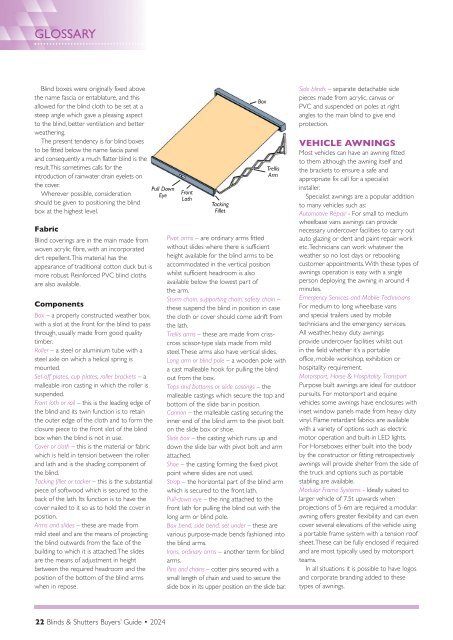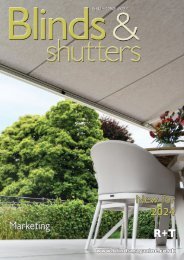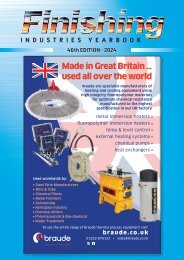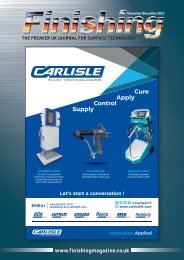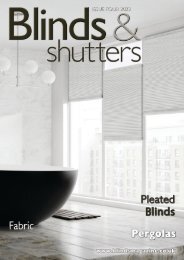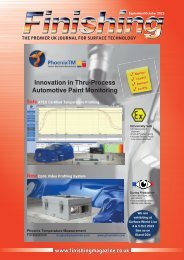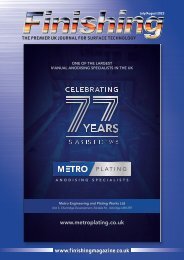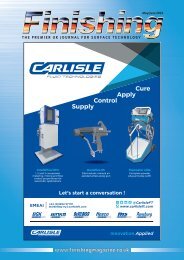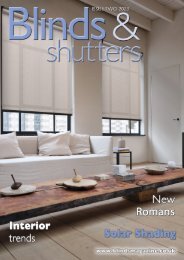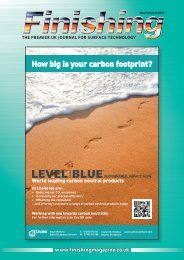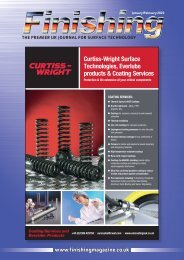Blinds & Shutters Buyers Guide 2024
Welcome to the Blinds & Shutters Buyers’ Guide 2024 the only UK directory for blinds, shutters, awnings and grilles. This is the essential guide for manufacturers, retailers and specifiers such as architects and designers, to source components and finished products. This edition of the Buyers’ Guide contains useful and practical information, such as the revised Glossary; a review of the Smart Buildings Show 2023; Features on new products and the BSI revised list for Relevant Standards. The A-Z Section and Buyers’ Guide Section provides information relating to 450 businesses and 50 different product types. Each year we review the categories in the Buyers’ Guide section. This year we have added Solar blinds in the INTERNAL section to make the guide more comprehensive: We hope that you find this year’s directory an invaluable aid to sourcing suppliers to provide the solution to your specific needs. The Blinds & Shutters team wish you all the very best for 2024!
Welcome to the Blinds & Shutters Buyers’ Guide 2024 the only UK directory for blinds, shutters, awnings and grilles.
This is the essential guide for manufacturers, retailers and specifiers such as architects and designers, to source components and finished products.
This edition of the Buyers’ Guide contains useful and practical information, such as the revised Glossary; a review of the Smart Buildings Show 2023; Features on new products and the BSI revised list for Relevant Standards.
The A-Z Section and Buyers’ Guide Section provides information relating to 450 businesses and 50 different product types.
Each year we review the categories in the Buyers’ Guide section. This year we have added Solar blinds in the INTERNAL section to make the guide more comprehensive:
We hope that you find this year’s directory an invaluable aid to sourcing suppliers to provide the solution to your specific needs.
The Blinds & Shutters team wish you all the very best for 2024!
Create successful ePaper yourself
Turn your PDF publications into a flip-book with our unique Google optimized e-Paper software.
GLOSSARY<br />
Blind boxes were originally fixed above<br />
the name fascia or entablature, and this<br />
allowed for the blind cloth to be set at a<br />
steep angle which gave a pleasing aspect<br />
to the blind, better ventilation and better<br />
weathering.<br />
The present tendency is for blind boxes<br />
to be fitted below the name fascia panel<br />
and consequently a much flatter blind is the<br />
result. This sometimes calls for the<br />
introduction of rainwater drain eyelets on<br />
the cover.<br />
Wherever possible, consideration<br />
should be given to positioning the blind<br />
box at the highest level.<br />
Fabric<br />
Blind coverings are in the main made from<br />
woven acrylic fibre, with an incorporated<br />
dirt repellent. This material has the<br />
appearance of traditional cotton duck but is<br />
more robust. Reinforced PVC blind cloths<br />
are also available.<br />
Components<br />
Box – a properly constructed weather box,<br />
with a slot at the front for the blind to pass<br />
through, usually made from good quality<br />
timber.<br />
Roller – a steel or aluminium tube with a<br />
steel axle on which a helical spring is<br />
mounted.<br />
Set-off plates, cup plates, roller brackets – a<br />
malleable iron casting in which the roller is<br />
suspended.<br />
Front lath or rail – this is the leading edge of<br />
the blind and its twin function is to retain<br />
the outer edge of the cloth and to form the<br />
closure piece to the front slot of the blind<br />
box when the blind is not in use.<br />
Cover or cloth – this is the material or fabric<br />
which is held in tension between the roller<br />
and lath and is the shading component of<br />
the blind.<br />
Tacking fillet or tacker – this is the substantial<br />
piece of softwood which is secured to the<br />
back of the lath. Its function is to have the<br />
cover nailed to it so as to hold the cover in<br />
position.<br />
Arms and slides – these are made from<br />
mild steel and are the means of projecting<br />
the blind outwards from the face of the<br />
building to which it is attached. The slides<br />
are the means of adjustment in height<br />
between the required headroom and the<br />
position of the bottom of the blind arms<br />
when in repose.<br />
Pull Down<br />
Eye<br />
Front<br />
Lath<br />
Tacking<br />
Fillet<br />
Box<br />
Trellis<br />
Arm<br />
Pivot arms – are ordinary arms fitted<br />
without slides where there is sufficient<br />
height available for the blind arms to be<br />
accommodated in the vertical position<br />
whilst sufficient headroom is also<br />
available below the lowest part of<br />
the arm.<br />
Storm chain, supporting chain, safety chain –<br />
these suspend the blind in position in case<br />
the cloth or cover should come adrift from<br />
the lath.<br />
Trellis arms – these are made from crisscross<br />
scissor-type slats made from mild<br />
steel. These arms also have vertical slides.<br />
Long arm or blind pole – a wooden pole with<br />
a cast malleable hook for pulling the blind<br />
out from the box.<br />
Tops and bottoms or slide castings – the<br />
malleable castings which secure the top and<br />
bottom of the slide bar in position.<br />
Cannon – the malleable casting securing the<br />
inner end of the blind arm to the pivot bolt<br />
on the slide box or shoe.<br />
Slide box – the casting which runs up and<br />
down the slide bar with pivot bolt and arm<br />
attached.<br />
Shoe – the casting forming the fixed pivot<br />
point where slides are not used.<br />
Strap – the horizontal part of the blind arm<br />
which is secured to the front lath.<br />
Pull-down eye – the ring attached to the<br />
front lath for pulling the blind out with the<br />
long arm or blind pole.<br />
Box bend, side bend, set under – these are<br />
various purpose-made bends fashioned into<br />
the blind arms.<br />
Irons, ordinary arms – another term for blind<br />
arms.<br />
Pins and chains – cotter pins secured with a<br />
small length of chain and used to secure the<br />
slide box in its upper position on the slide bar.<br />
Side blinds – separate detachable side<br />
pieces made from acrylic, canvas or<br />
PVC and suspended on poles at right<br />
angles to the main blind to give end<br />
protection.<br />
VEHICLE AWNINGS<br />
Most vehicles can have an awning fitted<br />
to them although the awning itself and<br />
the brackets to ensure a safe and<br />
appropriate fix call for a specialist<br />
installer.<br />
Specialist awnings are a popular addition<br />
to many vehicles such as:<br />
Automotive Repair - For small to medium<br />
wheelbase vans awnings can provide<br />
necessary undercover facilities to carry out<br />
auto glazing or dent and paint repair work<br />
etc. Technicians can work whatever the<br />
weather so no lost days or rebooking<br />
customer appointments. With these types of<br />
awnings operation is easy with a single<br />
person deploying the awning in around 4<br />
minutes.<br />
Emergency Services and Mobile Technicians<br />
For medium to long wheelbase vans<br />
and special trailers used by mobile<br />
technicians and the emergency services.<br />
All weather, heavy duty awnings<br />
provide undercover facilities whilst out<br />
in the field whether it’s a portable<br />
office, mobile workshop, exhibition or<br />
hospitality requirement.<br />
Motorsport, Horse & Hospitality Transport<br />
Purpose built awnings are ideal for outdoor<br />
pursuits. For motorsport and equine<br />
vehicles some awnings have enclosures with<br />
inset window panels made from heavy duty<br />
vinyl. Flame retardant fabrics are available<br />
with a variety of options such as electric<br />
motor operation and built-in LED lights.<br />
For Horseboxes either built into the body<br />
by the constructor or fitting retrospectively<br />
awnings will provide shelter from the side of<br />
the truck and options such as portable<br />
stabling are available.<br />
Modular Frame Systems - Ideally suited to<br />
larger vehicle of 7.5t upwards when<br />
projections of 5-6m are required a modular<br />
awning offers greater flexibility and can even<br />
cover several elevations of the vehicle using<br />
a portable frame system with a tension roof<br />
sheet. These can be fully enclosed if required<br />
and are most typically used by motorsport<br />
teams.<br />
In all situations it is possible to have logos<br />
and corporate branding added to these<br />
types of awnings.<br />
22 <strong>Blinds</strong> & <strong>Shutters</strong> <strong>Buyers</strong>’ <strong>Guide</strong> • <strong>2024</strong>


